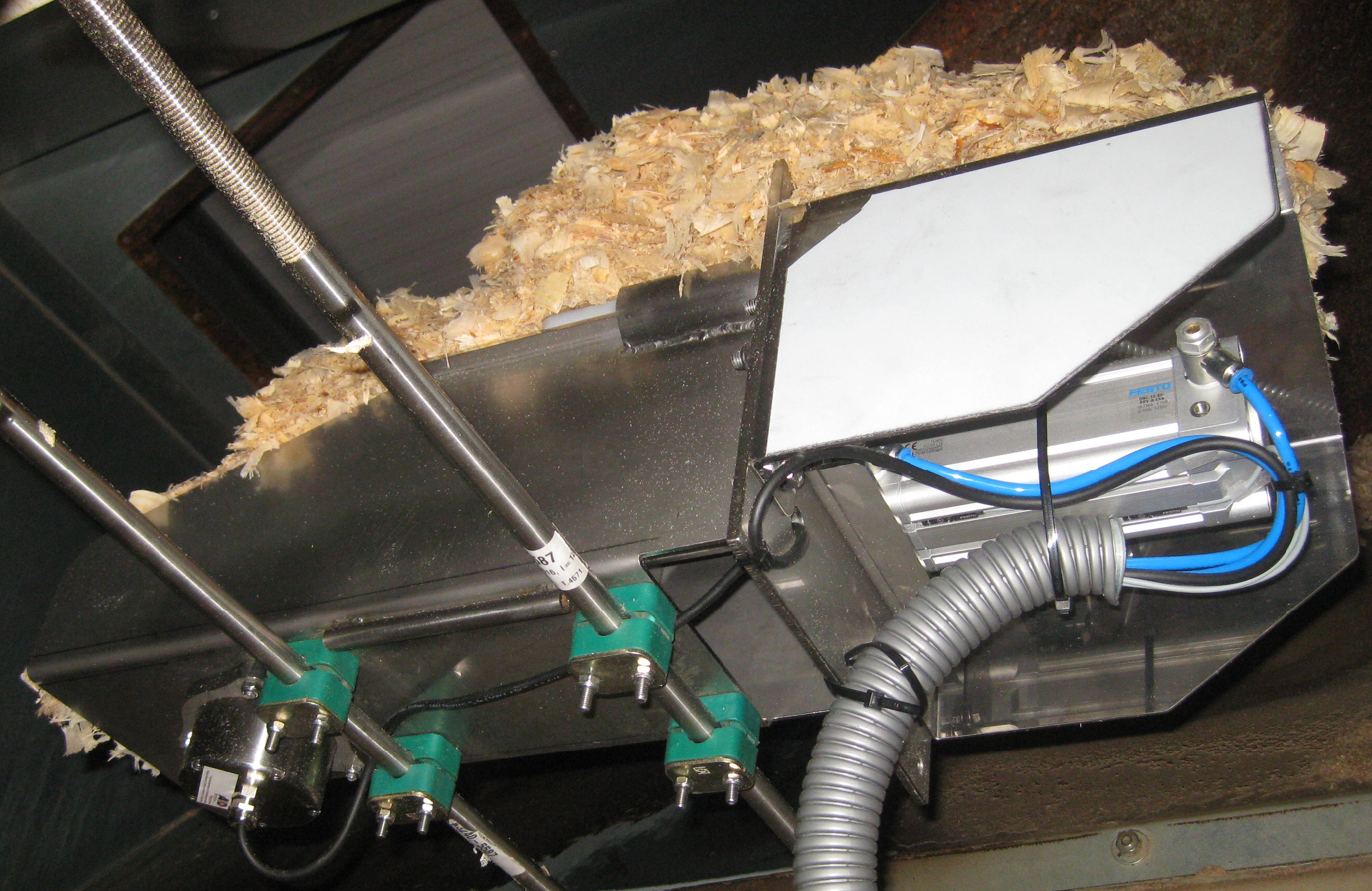Moisture Measurement - A must have in Timber Industry
28.04.2017 | by Michael Stoll
The application area of timber is extremely diverse. The increasing demand of timber or rather biomass used for renewable energies, allows the question after efficient wood production processes. The energy production through the renewable recource is CO2 neutral, because the combustion of timber blew out that much CO2 than it recieved during its whole lifetime. If wood is used for biomass production fossil fuels like oil, coal and natural gas will be saved. Due to this powerful arguments wood as an renewable energy supplier will be even more important in the future than it is today.

Why a moisture measurement is useful for production plants producing wood chips, pellets or sawdust?
To use wood conveniently as an energy source, it passes through different material forms in the manufacturing process. Wood that is used as biomass is usually processed into chips or pellets. When burning wood chips, an optimum calorific value must be achieved. Among other things, this calorific value is strongly depending on the moisture content of the wood chips. For the production of pellets, the residual moisture is a critical issue for the quality of the wood pellets. To produce pellets, sawdust or smal chipped wood chips are pressed through a steel die under high pressure. The now formed pressed pellets are broken off at a defined length. If the pelleting press is fed with sawdust that is too dry, the production output is reduced, the wear of the press increases significantly, and the die may even become blocked. If the moisture content of the sawdust is much too high, only a wood pulp will appear after the die instead of high quality pellets.
In order to avoid the above-mentioned problems during the combustion of wood chips and the production of wood pellets, the use of a moisture measurement system is extremely helpful. Quality, storability and cost-effectiveness of pellets and wood chips are increased many times by installing a moisture measurement. In addition to increasing product quality, a moisture measurement system also offers the possibility of optimizing complex and cost-intensive drying or moistening processes.
How to install a moisture sensor in the production process?
A very important aspect in implementing a moisture measurement is identifying a suitable measuring position for the moisture sensor in the product flow respectively in the production process. In order to achieve the best possible measured values measuring the water content of materials like wood chips, pellets or sawdust, it is very important that these are conveyed equally and with a constant material height over the moisture sensor surface. For this purpose, specially developed installation kits are available for sawdust, wood shavings and wood chips, among others are available on the market. One example for an installation kit is integrating a moisture measurement sensors in pneumatically operated compressor units or in screw compressor units. However, moisture measurement systems can also be integrated into various conveying systems of an existing production plant. Because each production plant has its own individual character and the moisture measurement must be carried out at a sensible point, individual consultation is more than adviseable.
Which installation kit is the right one for my moisture sensor?
Depending on the measuring situation in a production plant, already existing conveying elements (e.g. screw conveyors, scraper chain conveyors, chutes, elevators) different installation kits can be used.
Installing a moisture measurement in a free material fall:
If the material is in free fall in a drop shaft, the installation of a pneumatic compression unit is an option. To ensure unproblematic installation in the production plant, the free fall of the material should be minimum one meter. In this case, the compaction unit with integrated moisture sensor is positioned in the free fall of the material. There it captures a partial stream of the sawdust, compresses it by the use of a pneumatic cylinder, and conveys it homogeneously over the measuring surface of the moisture sensor. The result is a accurate working moisture measurement with extremely low oscillations of the measured value.

Moisture measurement in a screw compaction unit
If an installation of the moisture sensor in free fall is not feasible, it is also possible to collect a part of the sawdust with a screw compactor unit and feed it over the moisture measuring sensor. An SFM4 screw compactor unit creates continuous, constant measuring conditions and then returns the measured material to the production process. The specially adapted screw conveyor creates ideal measuring conditions for moisture measurement. As a result, the integrated moisture sensor provides precise and reproducible moisture values of the compacted material.

Can I upgrade my production line with a moisture measurement?
Often an industrial plant offers many suitable measuring positions for an installation of a moisture measuring system. For example the moisture sensors can, be integrated into an existing screw conveyor. Depending on the material behavior, this requires an adjustment of the screw helix. Other possibilities for a moisture measurement can also be silos or handover points of conveyor belts.

Moisture measurement technology increases sustainability, quality and cost-effectiveness
One of the many advantages of using moisture measurement technology in the field of pellet production is the enormous improvement in product quality. A well integrated moisture measurement system can not only significantly improve the quality of the end product, it can also significantly reduce production costs.
Optimization of product quality
- permanent quality control directly in the production process
- quality management becomes more transparent and can be stored digitally
- the water content of the material can be precisely adjusted for later storage issues
- detection and rejection of faulty batches
- production of high quality pellets (e.g. DIN plus, EN plus pellets) is possible
Cost savings using moisture sensors:
- ergetically intensive drying or moistening processes can be optimized
- the water content in the end product can be optimised economically
- time-intensive and expensive laboratory tests can be reduced to a minimum
Documentation video of the pellet plant in Falun (Sweden)
Installation position of the moisture sensors in the Swiss Combi dryer are in the material inlet and in the material outlet. Further moisture measurements were integrated in the confectioning process.
Further application examples for moisture measurements and moisture sensors for the materials biomass industry / wood industry:




